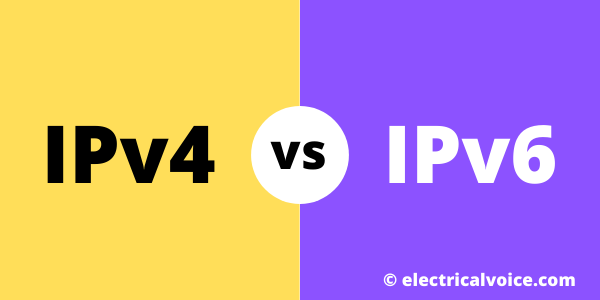Do you know how a computer distinguishes itself from another in the web of networks? Each computer has its unique IP address which is assigned to every device connected or a part of the network. This unique address behaves as an identifier and is used to identify the device on a network. It is what provides intended directions to reach the destination.
The two main protocols namely TCP (transmission control protocol) and IP (internet protocol) are both responsible for successful communication from source to the destination network. So these protocols work together as TCP/IP to connect a virtual connection between two devices. For data to travel from source to destination it has to go through various layers.
The network layer or internet layer is where it transmits the packets between devices and they use the Internet Protocol (IP). Communication occurs in the form of packets and for routing them protocols like IPv4 and IPv6 are used. These packets contain bits which are essential for the communication process to occur, for example, to load web pages, emails, messages etc.
So if they have the same functionalities, what makes these two protocols different from each other? Let us see the table below for a quick overview.

IPv4 vs IPv6
| IPv4 | IPv6 |
| Internet protocol version 4 | Internet protocol version 6 |
| Both source and destination addresses are 32 bits which are 4 bytes in length | Both source and destination addresses are 128 bits which are 16 bytes in length |
| Header of 20-60 bytes. | Header of 40 bytes fixed |
| Complex | Simple |
| Contain a field for options | Contains a field for extensions called next header |
| It Supports Manual and DHCP address configuration. | It supports Auto and renumbering address configuration |
| Field called TTL to give hop count | Field called hop limit to give the number of hops |
| Can generate 4.29×109 address space | Can produce 3.4×1038 address space |
| Fields of header length, identification, flags are present | Fields of header length, identification, flags are not present |
| End to end connection integrity is obtainable | End to end connection integrity is obtainable |
| Address representation is in decimal | Address representation is in hexadecimal |
| The checksum field is available | Checksum Field is not available |
| IPv4 is broadcasting. | IPv6 is multicasting, which allows efficient network operation |
| Packet flow identification is not available | Packet flow identification is available(flow label field) in the header |
| It supports VLSM. | It does not support VLSM. |
| Encryption and Authentication facility not provided | Encryption and Authentication are provided |
| Minimum packet size is 576 bytes | Minimum packet size 1208 bytes |
What is IPv4?
Internet protocol version 4 or better known as IPv4 is currently the most commonly used. It was developed as a connectionless protocol for use in packet-switched layer networks and its primary responsibility is to provide logical connections between network devices. This may include providing identification for every device.
It is a 32-bit address written in four numbers separated by ‘dot’. Each group of numbers which are separated by periods are called an Octet. Each number in an octet is in the range from 0-255 and this address can produce 4,294,967,296 possible combinations of unique addresses.
Computers don’t understand the numeric format and thus a binary number (1 or 0) is used to form 4 sets to complete an octet.
In a network, a packet using IPv4 generates an IPv4 header. It mainly includes version, header length, total length, identification, time to live, protocols, flags, header checksum source address, destination address and some more.
Even with it being so popular and efficient to use its main drawback is the fact that in a world where the population is growing steeply, and with so many devices each person would use, we would soon run out of IPv4 addresses. It also doesn’t provide a guarantee of delivery or avoidance of duplication of packets.
What is IPv6?
With IoT on a rampage of growing the number of devices connecting online has increased exponentially. This may lead to a shortage of IPv4 addresses. To tackle this problem IPv6 was introduced. It mainly differs from IPv4 by its address size which is 128-bit hexadecimal. With most IoT related devices adapting to IPv6 addresses, it has become almost as popular as IPv4.
IP version 6 is that extended version of Internet Protocol, which is far better than IP version 4 in terms of complexity and efficiency. It has a large address space and is easier as it has a simpler header. In a network, a packet using IPv6 generates an IPv6 header. IPv6 has multiple strategies that can be used to convert and use IPv4 addresses to IPv6. It is made up of 8 sets of 16 bits each, and these 8 sets are separated by a colon. The number that each set contains should be in the range of 0-255.
Since the hexadecimal address contains both numbers and alphabets, IPv6 is capable of producing over 340 undecillion (3.4*1038) addresses. With IPv6 we can be assured to not be depleted of network addresses anytime soon.
Author
Shriya Upasani
MIT World Peace University
